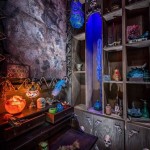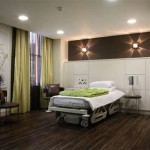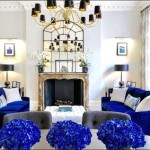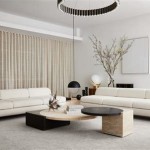Home Decor & Room Design: Principles and Practices
Home decor and room design encompass the art and science of creating functional, aesthetically pleasing, and personalized living spaces. It involves understanding fundamental design principles, selecting appropriate materials and furnishings, and implementing layout strategies that optimize flow and utility. Effective room design goes beyond mere decoration; it seeks to enhance the occupant's well-being and lifestyle.
The process begins with a thorough assessment of the existing space, considering factors such as its dimensions, natural light sources, architectural features, and any existing constraints. This initial evaluation provides a foundation for developing a comprehensive design plan that addresses both the functional and aesthetic requirements of the space.
Understanding the Elements of Design
The core elements of design serve as the building blocks for any successful room. These elements include space, line, form, light, color, texture, and pattern. Each element plays a crucial role in shaping the overall look and feel of a room, and their skillful manipulation is essential for achieving a harmonious and visually appealing environment.
Space: Refers to the physical area within a room, both positive (occupied) and negative (unoccupied). Effective space planning aims to optimize the use of available space, creating a balance between functionality and visual openness. Consider the scale and proportion of furniture in relation to the room's dimensions to avoid overcrowding or a feeling of emptiness. Negative space allows the eye to rest and appreciate the elements within the room, preventing visual fatigue.
Line: Lines define shapes, create visual pathways, and convey different emotions. Horizontal lines suggest stability and calmness, while vertical lines create a sense of height and formality. Diagonal lines introduce dynamism and movement. The strategic use of lines, through architectural details, furniture placement, and accessories, can significantly impact the perceived size and shape of a room.
Form: Form refers to the three-dimensional shape of objects within a room. Rounded forms are often perceived as softer and more inviting, while angular forms convey a sense of structure and modernity. Balancing different forms within a room creates visual interest and prevents monotony. Consider the relationship between the forms of furniture pieces, architectural elements, and decorative accessories.
Light: Light is a critical element that affects the mood, atmosphere, and functionality of a room. Natural light should be maximized whenever possible, as it provides illumination, enhances colors, and promotes well-being. Artificial lighting should be layered to provide ambient, task, and accent lighting. Ambient lighting provides overall illumination, task lighting focuses on specific activities, and accent lighting highlights architectural features or decorative objects. The color temperature of light also plays a role, with warmer tones creating a cozy atmosphere and cooler tones providing a more energetic feel.
Color: Color is one of the most powerful tools in room design, capable of evoking emotions, creating illusions of space, and influencing the perceived temperature of a room. Understanding color theory is essential for selecting a harmonious color palette. Consider the psychological effects of different colors and their impact on the overall mood of the space. Use color to create focal points, define zones, and enhance the architectural features of the room. Neutral colors provide a versatile backdrop, while accent colors add pops of personality and visual interest.
Texture: Texture refers to the surface quality of materials, both tactile and visual. Different textures add depth, dimension, and sensory interest to a room. Smooth textures reflect light and create a sense of openness, while rough textures absorb light and add warmth and intimacy. Mix and match textures to create visual contrast and prevent a flat, monotonous look. Consider the textures of fabrics, furniture, flooring, and wall coverings.
Pattern: Pattern adds visual interest and personality to a room. It can be used in fabrics, wallpapers, rugs, and accessories. The scale and complexity of patterns should be carefully considered in relation to the size of the room and the overall design style. Smaller patterns are generally more suitable for smaller rooms, while larger patterns can work well in larger spaces. Balance patterned elements with solid-colored surfaces to prevent visual overload.
Principles of Design: Guiding the Process
The principles of design provide a framework for organizing and harmonizing the elements of design. These principles include balance, proportion, harmony, emphasis, rhythm, and unity. Adhering to these principles helps to create a cohesive and visually pleasing room design.
Balance: Balance refers to the equilibrium of visual weight within a room. There are three main types of balance: symmetrical, asymmetrical, and radial. Symmetrical balance involves arranging elements equally on either side of a central axis, creating a sense of formality and order. Asymmetrical balance involves arranging elements unevenly, but in a way that still achieves visual equilibrium, creating a more dynamic and informal look. Radial balance involves arranging elements around a central point, creating a sense of focus and drama.
Proportion: Proportion refers to the relationship between the sizes and scales of different elements within a room. Achieving good proportion involves ensuring that furniture pieces are appropriately sized for the room and that decorative accessories are scaled to complement the furniture. The golden ratio (approximately 1.618) is often used as a guideline for achieving harmonious proportions. Avoid using furniture that is too large or too small for the room, as this can create a sense of imbalance and awkwardness.
Harmony: Harmony refers to the overall unity and coherence of a room design. It is achieved by selecting elements that complement each other in terms of color, style, and texture. A harmonious room design creates a sense of calm and well-being. Consider the overall theme or style of the room and select elements that support that theme. Avoid introducing elements that clash with the overall design aesthetic.
Emphasis: Emphasis involves creating a focal point within a room that draws the eye and captures attention. This can be achieved through the use of color, texture, pattern, or lighting. A fireplace, a piece of artwork, or a statement furniture piece can all serve as focal points. Use emphasis to create visual hierarchy and direct the viewer's attention to the most important elements in the room. Avoid having too many focal points, as this can create a sense of visual clutter.
Rhythm: Rhythm refers to the visual movement and flow within a room. It can be created through the repetition of elements, such as color, pattern, or shape. Rhythm helps to guide the eye through the room and create a sense of visual interest. Use rhythm to connect different elements and create a cohesive design. Avoid creating a monotonous or predictable rhythm, as this can lead to visual boredom.
Unity: Unity refers to the overall sense of completeness and coherence within a room. It is achieved by ensuring that all the elements work together harmoniously to create a unified whole. A unified room design feels balanced, harmonious, and visually pleasing. Consider the overall theme, style, and function of the room and select elements that support those goals. Avoid introducing elements that feel out of place or disconnected from the rest of the design.
Practical Considerations in Room Design
Beyond the aesthetic principles, practical considerations play a crucial role in successful room design. These considerations include budget, functionality, accessibility, and sustainability.
Budget: Establishing a realistic budget is essential for any room design project. The budget should encompass all costs, including materials, furniture, labor, and accessories. Prioritize essential elements and allocate funds accordingly. Consider alternative materials or DIY options to save money without compromising on quality or aesthetics. Obtain multiple quotes from contractors and vendors to ensure competitive pricing.
Functionality: The primary function of a room should guide its design. Consider the activities that will take place in the room and select furniture and layouts that support those activities. Optimize storage solutions to minimize clutter and maximize usable space. Ensure adequate lighting for both general illumination and specific tasks. Consider the needs of all occupants, including children, elderly individuals, and people with disabilities.
Accessibility: Accessibility is a crucial consideration for creating inclusive and user-friendly spaces. Ensure that doorways and hallways are wide enough to accommodate wheelchairs or other mobility devices. Provide ramps or elevators to overcome changes in elevation. Install grab bars in bathrooms and other areas where support is needed. Use lever-style door handles and easy-to-operate fixtures. Consider the placement of light switches and outlets to ensure they are within easy reach.
Sustainability: Sustainable design practices aim to minimize the environmental impact of a room design project. Choose eco-friendly materials, such as recycled content flooring, low-VOC paints, and sustainably harvested wood. Utilize energy-efficient lighting and appliances. Maximize natural light and ventilation to reduce reliance on artificial systems. Consider the durability and longevity of materials to minimize waste. Donate or recycle unwanted furniture and accessories instead of discarding them.
By carefully considering these practical aspects alongside the elements and principles of design, it is possible to create rooms that are not only beautiful and stylish but also functional, accessible, and environmentally responsible.

13 Creative Home Decor Ideas Design Cafe

77 Best Living Room Decor Ideas 2025 Unique

Home Decoration Interior Design N Living Room Decor

Living Room Decor Ideas For Your Home Design Cafe

25 Stunning Ideas To Decorate Rooms In Your Home

Best Room Decorations 15 Latest Decor Ideas By Livspace

Budget Friendly Home Decor Ideas The Business Standard

Home Decor Ideas Expert Shares Interior Design Tips For Beginners Hindustan Times
Home Decor Trends That Will Be Popular In 2025 According To Designers

Home Interior Design Ideas To Make The Most Of Your Living Room In Winter 2025







